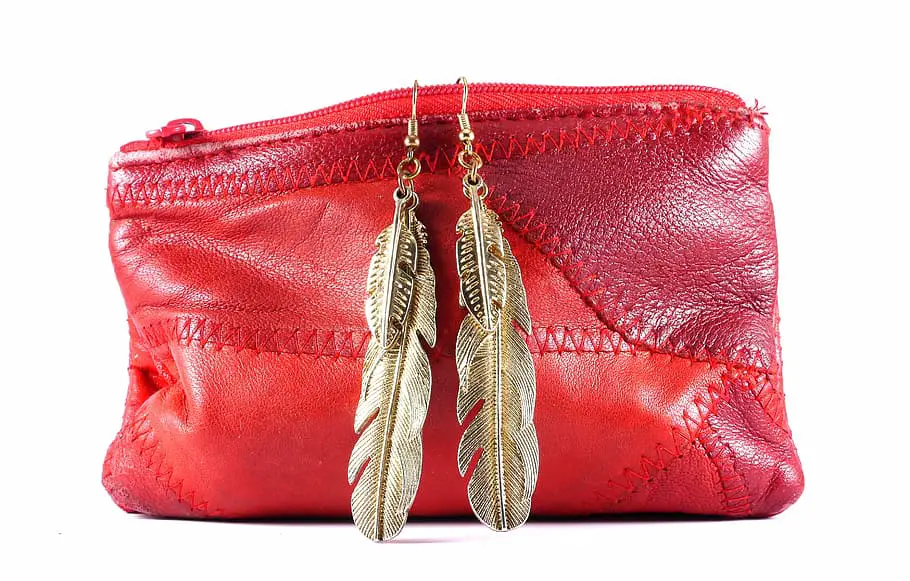Knowing how to clean used purses is essential for anyone who loves a good thrift find or simply wants to rejuvenate their handbags. In this guide, we will walk you through the steps required to make that used purse look and feel as good as new.

Things You’ll Need: How to Clean Used Purses
Cleaning a used purse requires some specific tools and supplies to ensure the job is done right. Here’s what you’ll need to gather before you begin:
For All Types of Purses:
- Soft Cloth: A non-abrasive cloth is essential for wiping down most materials without causing damage.
- Soft-Bristled Brush: Ideal for tackling more stubborn stains or debris.
- Mild Detergent: A gentle cleaner that can work on a variety of materials. Make sure it doesn’t contain bleach or other harsh chemicals.
- Cold Water: For rinsing or diluting detergent.
For Leather Purses:
- Leather Cleaner: Specifically formulated to safely clean leather material.
- Leather Conditioner: To restore moisture and shine to the leather after cleaning.
For Fabric Purses:
- Fabric Cleaner: A cleaner designed for fabric will be gentler on these types of purses.
Optional:
- Vacuum Cleaner with a Nozzle Attachment: Useful for removing dust and debris from inside the purse.
- Lint Roller: Helpful for removing lint or pet hair from the interior or exterior.
- Towels: For patting down the purse to remove excess moisture after cleaning.
How to Clean Used Purses Step by Step
Follow the steps listed below to clean used purses…
Identify the Material of Your Purse
Before diving into the cleaning process, it’s crucial to determine what material your purse is made of. This will help you choose the correct cleaning supplies and techniques. Look for any tags inside the purse that indicate its material or check the manufacturer’s website for information.
Empty the Purse Completely
The first step in the cleaning process is ensuring that your purse is entirely empty. Start by unzipping or opening all pockets and compartments. Remove all items such as coins, receipts, cosmetics, and any other belongings that might be inside.
It’s easy to overlook hidden pockets, so be meticulous. Once you think it’s empty, give it a gentle shake over a table or sink to dislodge any debris or smaller items that may be stuck in corners. This step is crucial because items left inside could get damaged during the cleaning process or interfere with a thorough cleaning.
Spot Test the Cleaner
Before applying any cleaning solution to your purse, it’s highly advisable to perform a spot test. Find a small, inconspicuous area on your purse; the inside or a corner often works best. Apply a tiny amount of your chosen cleaner to this spot and let it sit for a few minutes.
If the material discolors, fades, or shows any adverse reaction, it’s best not to use that cleaner on the purse. If there are no adverse effects, you’re good to proceed.
Spot testing helps prevent potential damage or discoloration to the visible parts of your purse, ensuring that your cleaning efforts enhance rather than detract from its appearance.
Read more bag cleaning articles here – How to Clean Bags: Your Comprehensive Guide for Spotless Bags
How to Clean Used Purse: The Cleaning Process
With your purse emptied and your cleaner spot-tested, you’re now ready to begin the actual cleaning. Start by applying a small amount of the cleaner onto a soft cloth—avoid pouring cleaner directly onto the purse to prevent saturation.
In a gentle, circular motion, begin wiping the purse’s surface, starting from one end and moving towards the other. For more stubborn stains or marks that aren’t easily removed by the cloth, switch to a soft-bristled brush.
Using gentle back-and-forth motions, carefully scrub the stained area. Make sure not to press too hard to avoid damaging the material.
Rinse and Dry
Once you’ve cleaned the entire purse, the next step is rinsing. If your purse is made from a water-resistant material like synthetic leather or nylon, you can proceed to gently rinse it with cold water. If your purse is made of a material that shouldn’t be rinsed, like genuine leather, skip this step.
After rinsing or skipping the rinse, gently pat your purse with a towel to remove excess moisture. Allow your purse to dry naturally by hanging it up or laying it on a flat surface, making sure it retains its shape as it dries. Using a hairdryer is not recommended, as the intense heat could damage the material.
Condition the Purse
If your purse is made of leather, this last step is especially important. Leather conditioner helps keep the material soft, supple, and shiny.
Apply a small amount of leather conditioner to a soft cloth and gently rub it into the purse in circular motions, just as you did with the cleaner. Give it a few minutes to soak in, then wipe away any excess with a clean cloth.
Conclusion: How to Clean Used Purses
Cleaning a used purse may seem daunting, but with the right approach and materials, it’s a simple task. We hope this step-by-step guide on how to clean a used purse has been helpful in making your thrifted or beloved handbag look as good as new.